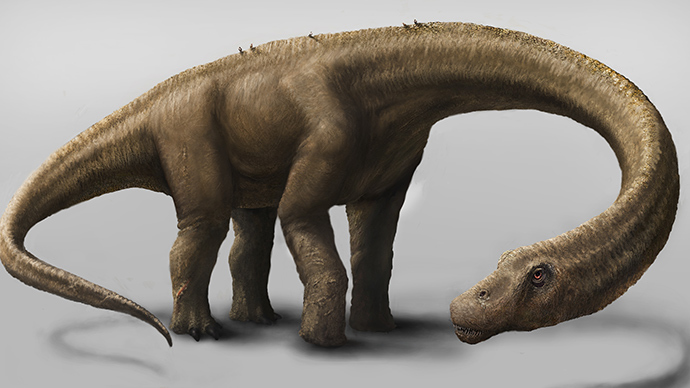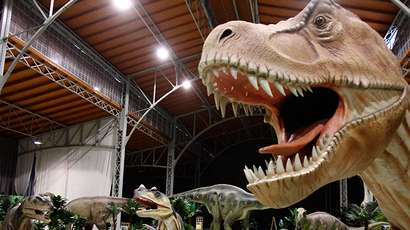‘Biggest land animal’ ever? Huge 60-ton dino’s bones unearthed in Argentina
Scientists have discovered the remains of possibly the largest known creature that ever walked this Earth – a 26-meter long, 60-ton dinosaur. Dubbed Dreadnoughtus Schrani, the plant-eating monster is thought to have still been growing at the time it died.
What was initially supposed to be a small collection of bones found by fossil hunters in southern Argentina in 2005 has recently proved to be one of the greatest discoveries in paleontology.
A meter-wide vertebra and a thigh bone the size of a man were uncovered by scientists as they studied the remains.
The new species was so enormous that Kenneth Lacovara, a paleontologist at Drexel University in Philadelphia, named the dinosaur Dreadnoughtus Schrani – after the Dreadnought ships of the beginning of the 20th century. Those battleships were huge, possessed a lot of armament and were impervious, Lacovara explained. The second part of the name was picked to honor entrepreneur Adam Schran, who provided support for the research.
The scientists measured the bones and calculated the animal’s size: it weighed about 60 tons and reached 26 meters in length - heavier than some Boeing 737 models. Even though these dimensions stir the imagination, the most startling fact is that the dinosaur was still growing.

According to Lacovara, the beast had little to fear. Dreadnoughtus was a plant-eater, but it could protect itself with a muscular tail used as weapon and large claws on its back feet. It surely was the king of the forests in the late Cretaceous, the period from circa 145 to 66 million years ago.
The unearthed remains are in very good condition, with almost 70 percent of the bones preserved – which is rare, as most excavations find only a fraction of a skeleton.
“The most important thing is that the specimen is relatively complete, especially when compared to other gigantic dinosaur species we know,” says Matthew Carrano at the Smithsonian Institution National Museum of Natural History in Washington, DC.
“Although sauropods are often thought to have all looked pretty similar, once you see the anatomy it’s clear that there’s an enormous variety of shapes and sizes. And understanding exactly how they are built is one of the key things to understanding how they functioned and evolved,” Carrano told New Scientist.

“The relative completeness of Dreadnoughtus and the exquisite preservation of its bones will help improve our understanding of many questions,” says Lacovara. These questions include the physiology of big animals and their ways of life.
Using the well-preserved skeleton of the dinosaur, scientists held some experiments in lab and even created and used 3D models of the animals.
“Because the bones beautifully preserve muscle scars where muscles were inserted, the musculature of a supermassive dinosaur can now be reconstructed in unprecedented detail,” Lacovara explained.
“Ultimately, Dreadnoughtus may be able to help us understand the upper size limits to life on land, in terms of the physical constraints imposed by bone and muscle strength, blood pressure and feeding requirements,” says Paul Barrett at the Natural History Museum in London.














